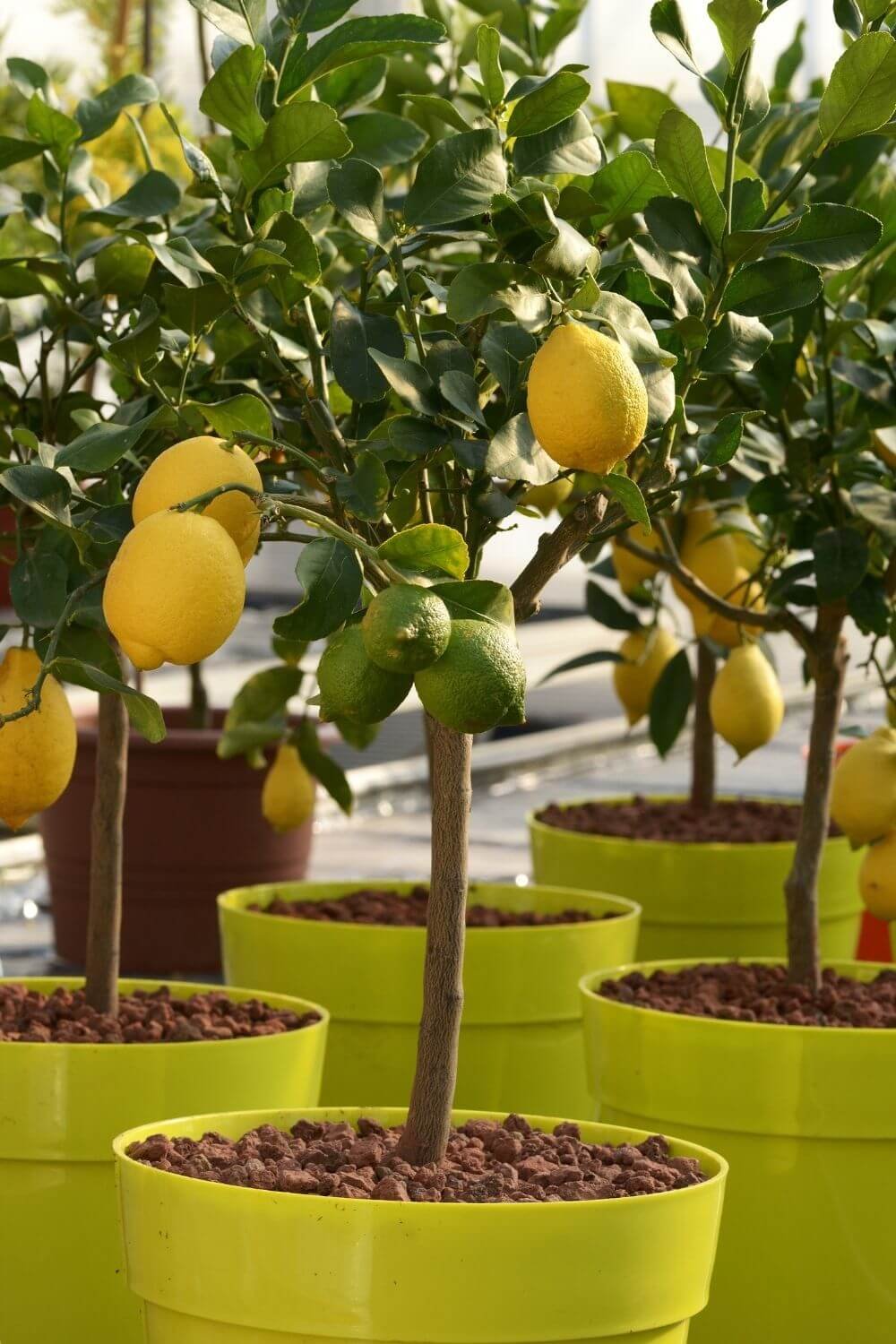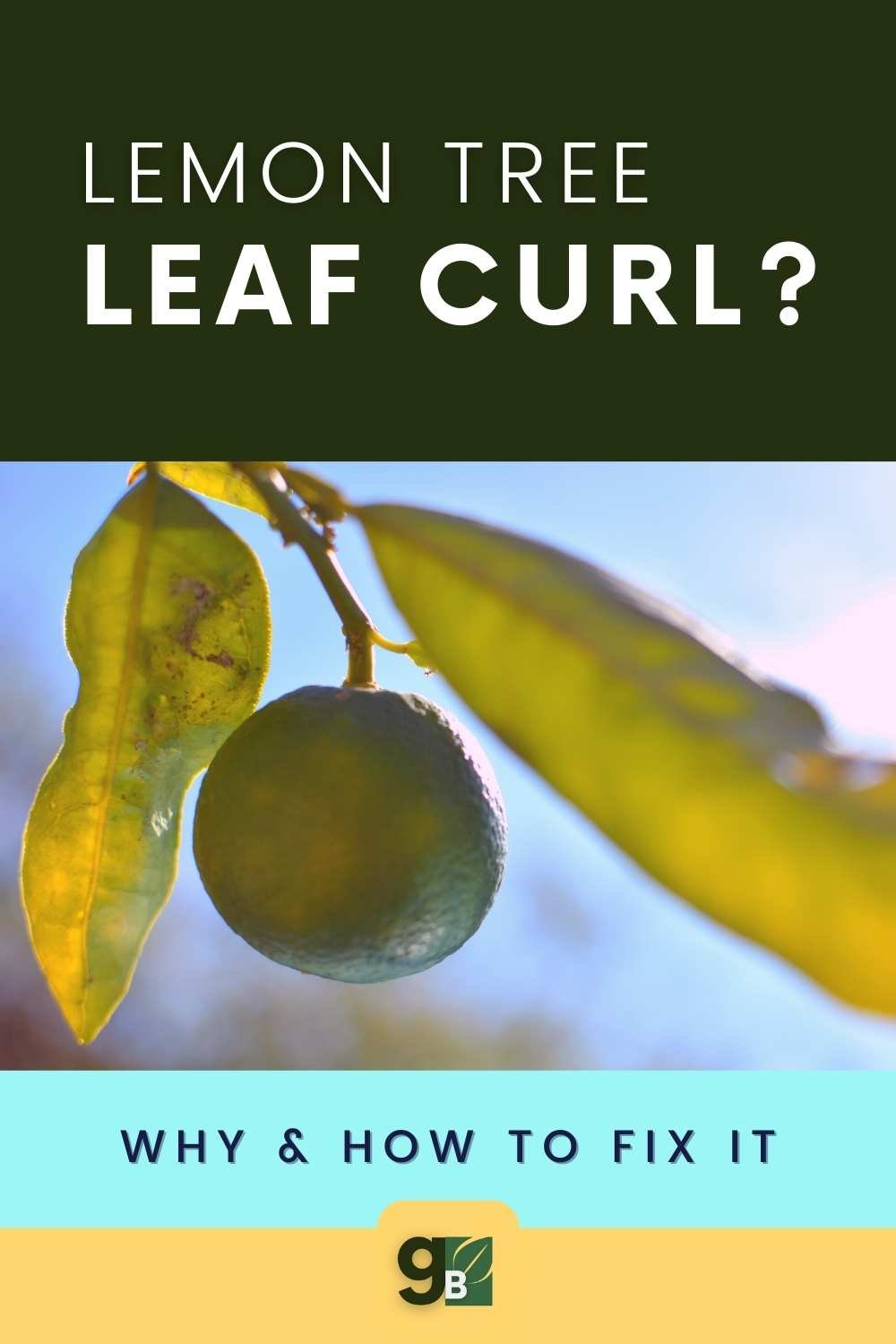Why Are My Lemon Tree Leaves Curling? Solutions to Keep Your Lemon Tree Healthy
Lemon tree leaves curling?
If you've noticed lately that your lemon tree leaves have been curling, you're not alone. This is a common problem with lemon trees, but there are solutions to keep your lemon tree healthy and looking great! In this blog post, we will discuss the causes of lemon tree leaves curling and how to remedy the situation.
The items listed are accompanied by affiliate links, meaning I earn a small commission if a purchase is made through my links. This has no impact on the cost to the consumer. I link to products this way whenever possible, and it has no bearing on the products I choose to review or recommend.
What is Lemon Tree Leaf Curl?
Lemon tree leaf curl is a condition that causes the leaves of lemon trees to curl up and become distorted. The leaves may also turn yellow or brown and may experience leaf drop. It is a sign that your citrus tree is under stress. There are several reasons why lemon tree leaves are curling, including:
Drought Stress
Extreme Temperatures
Nutrient deficiencies
Overwatering
Pests
Diseases
The Most Common Causes of Lemon Tree Leaves Curling
Drought Stress
Drought stress is one of the most common reasons for lemon tree leaves to curl. When the roots of lemon trees don't have enough water this causes a lack of nutrients and water to reach the leaves, which leads to them shriveling and leaf curling.
When your lemon tree's leaves curl in on themselves while remaining green, it might be due to insufficient watering.
The first step is to check the soil moisture around your citrus tree. If it is dry, give your lemon tree a deep watering, making sure to wet the roots.
You can also mulch around your lemon tree to help retain moisture in the soil. This is especially important during hot, dry weather.
If you have an indoor Meyer lemon tree in a pot, make sure to check the soil moisture more frequently as potted plants can dry out quickly and are more prone to drought stress. Also, be sure to water your lemon tree with room temperature water as cold water can shock the roots and cause leaf curl.
Lemon trees like to be watered deeply but less frequently. Give your lemon trees a deep soak about every 10 days and allow the soil to dry out between waterings. This will help to encourage deep roots growth and prevent drought stress.
Once you have corrected the watering issue, the lemon leaf should stop curling.
To prevent drought stress, make lemon trees are watered deeply and regularly during the hot, dry summer months. Be sure to check the soil moisture around your lemon tree before watering to avoid overwatering.
Extreme Temperatures
Lemon trees are tropical plants and prefer warm weather. When lemon trees are exposed to cold temperatures, it can cause curling citrus leaves. If you live in an area with cold winters, you'll need to take steps to protect your fruit trees from the cold.
One way to protect lemon trees from cold weather is to cover them with a frost blanket or burlap. This will help to insulate them and prevent the leaves from freezing.
You can also move your lemon tree indoors during the winter months. Place it in a sunny spot near a window where it will be protected from the cold.
If your lemon tree is exposed to temperatures below freezing, the leaves will turn brown and die. If this happens, you can cut off the damaged leaves and new growth should appear in the spring.
Too warm temperatures can also cause citrus leaf curl. In the summer, excessive heat can cause the plant to become dehydrated and curl its leaves as a result of a lack of water.
Simply relocate your lemon tree to a shaded location if its leaves curl up during hot weather. To counteract the soil heat, add mulch around your plant. Watering your citrus plant more frequently in the summer months will help them recover.
“The most common nutrient deficiencies that cause lemon tree leaves to curl are magnesium and potassium.”
Nutrient Deficiencies
Lemon trees need certain nutrients to stay healthy and produce fruit. When lemon trees are deficient in these nutrients, it can cause their leaves to curl, droop, and turn yellow.
Lemon trees are heavy feeders and need to be fertilized frequently so they can produce fruit.
The most common nutrient deficiencies that cause lemon tree leaves to curl are magnesium and potassium.
When the lemon tree leaves curl more inwards, this is an indication that your lemon tree has a magnesium insufficiency. While a potassium deficiency will induce the lemon tree's leaves to curl down at the tip.
To remedy these deficiencies, lemon trees need to be fertilized with a fertilizer that is specially formulated for citrus trees. This way, they will be getting the right amount of nutrients they need. Be sure to follow the manufacturer's instructions on how to fertilize your lemon tree.
Overwatering
While lemon trees need to be watered regularly, too much water can also cause their leaves to curl. When lemon tree roots are constantly wet, it can lead to root rot and a number of other problems.
Lemon trees need well-draining soil to avoid lemon tree leaves curling from too much water. If you think your lemon tree is being overwatered, check the drainage around the plant. The soil should be moist but not soggy.
To fix the problem, allow the soil to dry out completely before watering your lemon tree again. You may also need to repot your lemon tree into a pot with drainage holes to help improve drainage.
Pests
Lemon trees are also susceptible to pests that can cause their leaves to curl. Common pests that attack lemon trees include aphids, spider mites, scales, and psyllids. These pests can all suck the sap from lemon tree leaves, causing them to curl and leaf deformations.
If you find that your citrus leaves are curling, check their undersides for tiny pests feeding in groups. If there's an aphid or spider mite infestation spray the tree with insecticidal soap or neem oil on a weekly basis until they're gone! Make sure you saturate the entire leaf well including the undersides when treating them for pests.
Your citrus tree's leaf curl will go away as soon as the pests have been eliminated.
Citrus leaf miners are a pesky pest of citrus trees, but instead of consuming plant juices as other insects do, they feed on tunneling through leaves. The citrus leaf miner leaves behind white or yellow lines on the green surface of their host plants, making them very noticeable indeed! They can be difficult to treat and luckily citrus trees can survive an average infestation of this sort of insect.
When you see signs of pests on your fruit tree, it's important to take action right away. The sooner you get rid of the pests, the better chance your lemon tree will have of recovering.
Pin for later!
Citrus Tree Disease
A citrus disease can cause lemon tree leaves to curl. Citrus leaves are susceptible to fungal diseases that cause them to curl, lose color, and wilt. The most common of these is botrytis and bacterial blast.
Botrytis is a gray mold that can affect lemon trees in humid or wet conditions. The fungus will cause the lemon trees to lose flowers and drop fruit.
To prevent this disease, make sure your lemon tree has good air circulation, isn't overwatered, and gets enough sunlight. If you notice any signs of botrytis prune any diseased branches and infected leaves right away.
Bacterial blast also known as citrus blast is another fungal disease that can cause citrus tree leaf curl. This disease is caused by bacteria that enter lemon tree leaves through wounds, wind damage, or insect feeding sites. Before the lemon tree leaves break off, they will wilt, curl up, and dry on the tree.
Citrus blast can be prevented by planting citrus trees with adequate wind shelter and pruning any dead or diseased branches as soon as possible.
If your lemon tree is already infected, you can treat it with a fungicide. Copper spray is an excellent method to stop the spread of disease on your citrus trees, as it also destroys fungal and parasitic plants that cause leaf curl!
Treating lemon tree leaves curling caused by a fungal disease is important to do as soon as possible. The sooner you treat the disease, the better.
Summing Up Lemon Leaves Curling
Lemon leaves curling can be caused by many things including pests, overwatering, or fungal diseases. The best way to prevent lemon tree leaves from curling is to keep an eye on your plant and take action as soon as you see any signs of problems. With a little care, you can keep your lemon tree healthy and looking its best!






